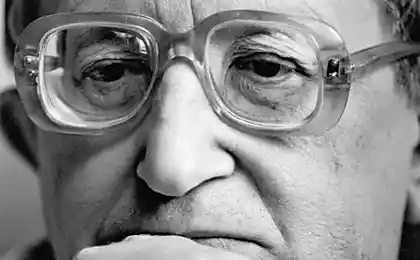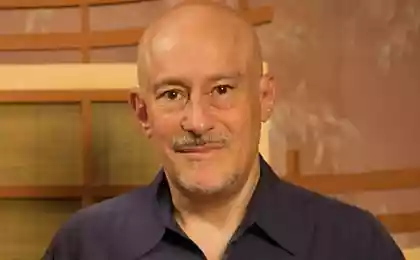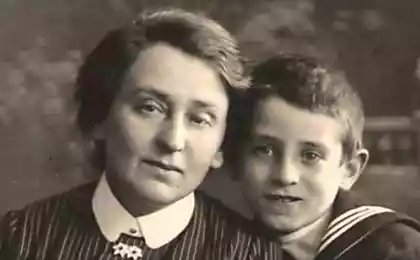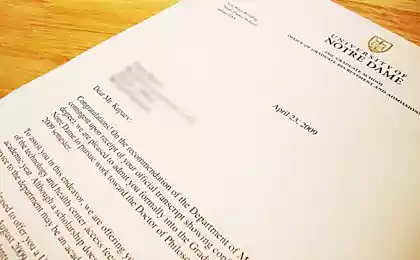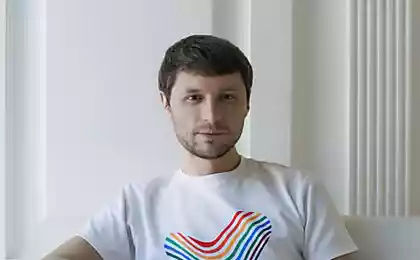565
Letter to the future: why it's important to see yourself in 20 years
The future seems to have changed and become closer than before. What seemed yesterday fantastic, today is everyday reality, and the speed of these changes has increased so much that sometimes we don't know whether we're talking about the future or the present. However, we still have only a vague idea how to handle the future as it is to see how to build plans and increase the likelihood of their implementation.
Modern science learns to answer these Voprosy. Let's start with something simple: recent studies on perception of time and its linkages with illegal (delinquent) behavior. We are interested not so much bad behavior, how many good methods of presenting the future. They will show how you can save money, make a better decision, to give up bad habits and acquire useful.
We tend to think of themselves and present themselves in the past or future how about a few different or even strangers. So, we are less identify ourselves today with you twenty years ago than a twenty days ago. The same pattern and with the future orientation – we easily can you imagine yourself in three months than in three years. This lightness and brightness of the presentation themselves in the future, as it turns out, plays a very significant role in our behavior in the present.
The people who did it with difficulty, or fails generally prone to illegal behavior because they are forced to live in the here and now, and when the present offers the chance of immediate rewards: money, sex, pleasure, – they may not consider the consequences and pay for it in the future. Criminological research confirms that criminals focus on short-term goals and often not able to build adequate plans for several years ahead. What if to strengthen the ability to imagine a brighter future – whether this will lead to the reduction of wrongful behavior? Scientists from the U.S. and the Netherlands tested this hypothesis in two experiments. They asked more than a hundred young people to write for five minutes a short email (200-300 words): in one group the future you in three months, in the other group – myself 20 years from now. Following this, the participants had to solve five dilemmas to test the propensity to delinquent choice. Dilemma dealt with theft, fraud with insurance, illegally downloading files from the Internet. So, for example, sounded one of the dilemmas:
You need a new laptop but the money you have is not enough. Friend said that his buddy just sells a new laptop that "fell off the truck". Characteristics of the computer – not just those that you need and the price is very attractive. How likely are you to buy this, most likely stolen laptop? The results showed that those who wrote a letter to himself in 20 years were less likely to buy a stolen laptop or to steal bad lying thing. In the second study, the experimenters went a step further – they provide an opportunity for each participant (average age 21) to meet with myself forty years! To do this, they photographed, and while the participants answered the test questions, the computer was old their faces. Then, each participant wore a virtual reality helmet and "go" on a computer-generated room in which hung the mirror. He looked at his reflection and in the control group saw themselves as present, and experimental – aged for 20 years. Realism is achieved by the fact that computer-generated virtual image in the mirror acted like the present: the rotation sensor head on the helmet was allowed to see himself from different angles and distances.
After this meeting with yourself participants were asked to answer eight questions that require erudition. Scientists have tried to make the questions so that the probability of response to all questions was extremely low. The booklet with questions was told that if the party will answer seven or eight questions correctly (check you answers on the last page), he can take the enclosed envelope with seven dollars. Created a situation in which it is completely safe to cheat.
Those who saw their future selves were less inclined to behave dishonestly – only 6.1% cheated compared to 23.5% in the control group.
A good opportunity to present itself in the future, thus to some extent determines the behavior in the present. Probably, and in fact people who are prone to delinquent behavior, there are problems and they are locked in the present, with its temptations and disregard of consequences.
The design of these experiments have been used to test other hypotheses: for example, in 2011, scientists showed the young women their photos 20 years from now if they continue to smoke. Many women have experienced the shock and nausea, peering into their future wrinkles, and promised to give up cigarettes. A similar experiment was recently replicated in Australia, but also promises, they wanted measurable results. 13,6% of participants do quit Smoking, which was confirmed by laboratory tests. Those who have not abandoned the desire and intention to do so has increased, and the dependence decreased significantly. I wonder what the cost of such motivation from the future (generating pictures of an old person) was only of 5.79 AUD (about 180 rubles).
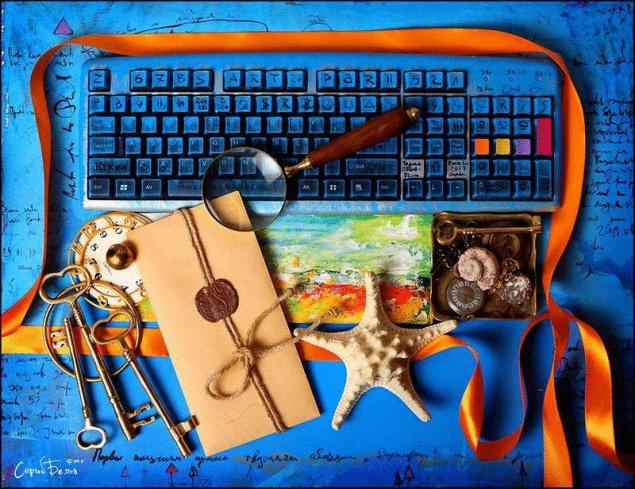
In the Virtual Human Interaction Lab at Stanford University, it was discovered that young people see themselves in the future tend to start putting money aside two times more compared to the control group. By the way, it turned out that not just the view of the future plays a role, but view it yourself in the future. It turned out that very often man of the future – rather, the stranger, the other person and it is difficult to imagine yourself and build a connection with your true self. As we can see, simple computer intervention can strengthen the imagination, and absolutely no damage to yourself. You do not think that compromising on something important, quitting Smoking or refusing to buy a stolen phone? We take care of the old man, reminding us that he is not sick, looked good, not in jail and he had savings.
Professor Hal Hershfield of the Virtual Human Interaction Lab, the author of the method of virtual travel to his reflection in the mirror in 20 years, recommends a number of methods that will make the future more real and closer.
1. Write a letter to yourself future. (Advanced) try to write a letter to yourself from the future to the present. 2. In cases where there is an important choice, you can ask yourself: "How will I react to the future in 20-30 years on one or the other option?" This will reduce the emotional involvement of the moment and impulsive decisions.
3. Spend more time with their grandparents. They are our intermediaries to the vision of the future, in part a reflection of us. This will allow subconsciously to understand that we ourselves will inevitably be the same. Source slon.ru
Source: /users/10
Modern science learns to answer these Voprosy. Let's start with something simple: recent studies on perception of time and its linkages with illegal (delinquent) behavior. We are interested not so much bad behavior, how many good methods of presenting the future. They will show how you can save money, make a better decision, to give up bad habits and acquire useful.
We tend to think of themselves and present themselves in the past or future how about a few different or even strangers. So, we are less identify ourselves today with you twenty years ago than a twenty days ago. The same pattern and with the future orientation – we easily can you imagine yourself in three months than in three years. This lightness and brightness of the presentation themselves in the future, as it turns out, plays a very significant role in our behavior in the present.
The people who did it with difficulty, or fails generally prone to illegal behavior because they are forced to live in the here and now, and when the present offers the chance of immediate rewards: money, sex, pleasure, – they may not consider the consequences and pay for it in the future. Criminological research confirms that criminals focus on short-term goals and often not able to build adequate plans for several years ahead. What if to strengthen the ability to imagine a brighter future – whether this will lead to the reduction of wrongful behavior? Scientists from the U.S. and the Netherlands tested this hypothesis in two experiments. They asked more than a hundred young people to write for five minutes a short email (200-300 words): in one group the future you in three months, in the other group – myself 20 years from now. Following this, the participants had to solve five dilemmas to test the propensity to delinquent choice. Dilemma dealt with theft, fraud with insurance, illegally downloading files from the Internet. So, for example, sounded one of the dilemmas:
You need a new laptop but the money you have is not enough. Friend said that his buddy just sells a new laptop that "fell off the truck". Characteristics of the computer – not just those that you need and the price is very attractive. How likely are you to buy this, most likely stolen laptop? The results showed that those who wrote a letter to himself in 20 years were less likely to buy a stolen laptop or to steal bad lying thing. In the second study, the experimenters went a step further – they provide an opportunity for each participant (average age 21) to meet with myself forty years! To do this, they photographed, and while the participants answered the test questions, the computer was old their faces. Then, each participant wore a virtual reality helmet and "go" on a computer-generated room in which hung the mirror. He looked at his reflection and in the control group saw themselves as present, and experimental – aged for 20 years. Realism is achieved by the fact that computer-generated virtual image in the mirror acted like the present: the rotation sensor head on the helmet was allowed to see himself from different angles and distances.
After this meeting with yourself participants were asked to answer eight questions that require erudition. Scientists have tried to make the questions so that the probability of response to all questions was extremely low. The booklet with questions was told that if the party will answer seven or eight questions correctly (check you answers on the last page), he can take the enclosed envelope with seven dollars. Created a situation in which it is completely safe to cheat.
Those who saw their future selves were less inclined to behave dishonestly – only 6.1% cheated compared to 23.5% in the control group.
A good opportunity to present itself in the future, thus to some extent determines the behavior in the present. Probably, and in fact people who are prone to delinquent behavior, there are problems and they are locked in the present, with its temptations and disregard of consequences.
The design of these experiments have been used to test other hypotheses: for example, in 2011, scientists showed the young women their photos 20 years from now if they continue to smoke. Many women have experienced the shock and nausea, peering into their future wrinkles, and promised to give up cigarettes. A similar experiment was recently replicated in Australia, but also promises, they wanted measurable results. 13,6% of participants do quit Smoking, which was confirmed by laboratory tests. Those who have not abandoned the desire and intention to do so has increased, and the dependence decreased significantly. I wonder what the cost of such motivation from the future (generating pictures of an old person) was only of 5.79 AUD (about 180 rubles).

In the Virtual Human Interaction Lab at Stanford University, it was discovered that young people see themselves in the future tend to start putting money aside two times more compared to the control group. By the way, it turned out that not just the view of the future plays a role, but view it yourself in the future. It turned out that very often man of the future – rather, the stranger, the other person and it is difficult to imagine yourself and build a connection with your true self. As we can see, simple computer intervention can strengthen the imagination, and absolutely no damage to yourself. You do not think that compromising on something important, quitting Smoking or refusing to buy a stolen phone? We take care of the old man, reminding us that he is not sick, looked good, not in jail and he had savings.
Professor Hal Hershfield of the Virtual Human Interaction Lab, the author of the method of virtual travel to his reflection in the mirror in 20 years, recommends a number of methods that will make the future more real and closer.
1. Write a letter to yourself future. (Advanced) try to write a letter to yourself from the future to the present. 2. In cases where there is an important choice, you can ask yourself: "How will I react to the future in 20-30 years on one or the other option?" This will reduce the emotional involvement of the moment and impulsive decisions.
3. Spend more time with their grandparents. They are our intermediaries to the vision of the future, in part a reflection of us. This will allow subconsciously to understand that we ourselves will inevitably be the same. Source slon.ru
Source: /users/10










